Ti Kuih to sweeten the words of the Gods

Ti Kuih, the sweet sticky rice cake, is known in Mandarin as "nian gao", which literally translates to "year cake". Its name also carries an auspicious homophone, symbolising "rising abundance" or "prosperity for the coming year".
The Kitchen God, honoured as the inventor of fire, holds a central role in traditional Chinese households. On the 24th day of the 12th lunar month, he ascends to heaven to present his report on the family’s behaviour to the Jade Emperor. This report determines the family’s blessings or challenges in the year ahead, making it crucial to secure his favour. Despite their diligent efforts to earn his approval, families take no chances. Before the Kitchen God embarks on his celestial journey, his mouth is sweetened – or even "sealed" – with Ti Kuih. This sticky delicacy, with its rich caramelised sweetness, ensures his lips are sugar-coated, encouraging a favourable report. Following his elaborate send-off, the Kitchen God returns on the fourth day of the Lunar New Year.
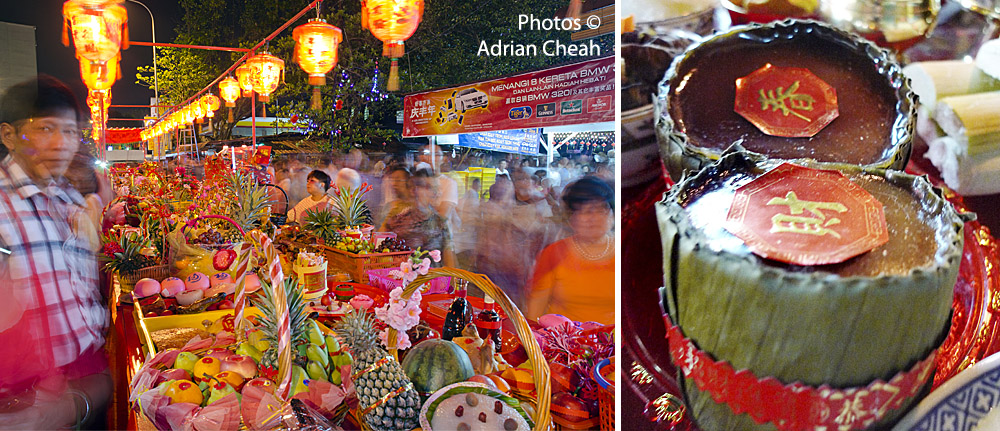
Ti Kuih also plays a significant role on the 8th night of Chinese New Year during the Hokkien celebration of Pai Tee Kong – the homage to the Jade Emperor, also known as the God of Heaven. For the Hokkien community, the 9th day holds extraordinary importance, even surpassing the New Year festivities for some. According to tradition, the Hokkien clan was saved from a massacre on this day, a salvation attributed to their prayers to the Jade Emperor while they sought refuge in sugar cane fields.
Preparations for this momentous occasion begin early on the 8th day. Families crowd bustling markets to purchase essential offerings – sugar cane stalks, a symbol of the refuge that saved their ancestors, alongside roasted pigs, cooked meats, fruits and, of course, Ti Kuih. As the evening progresses, households arrange an elaborate offering table, laden with cakes, meats and fruits, often framing it with tall sugar cane stalks as a mark of gratitude.
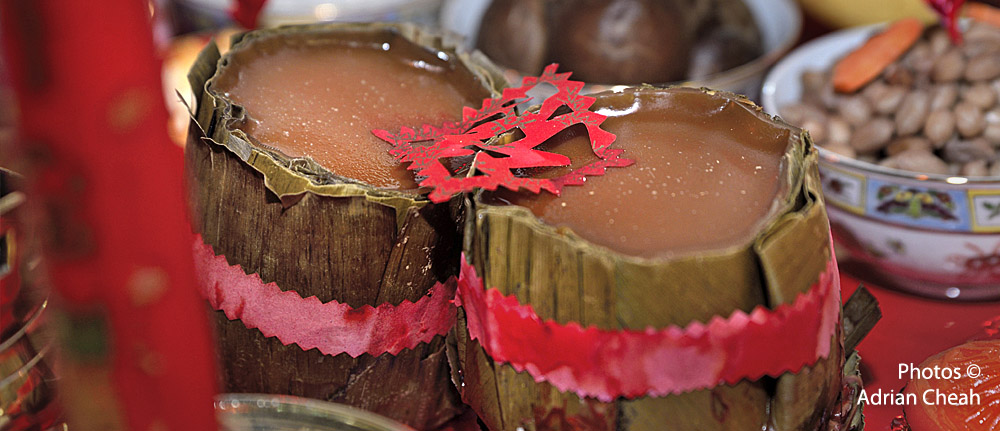
The rituals traditionally commence around 11:00 pm, which, in Chinese timekeeping, marks the start of a new day. At this hour, families begin their prayers to the Jade Emperor, with some extending their devotions past midnight. These vibrant celebrations are especially visible at Penang's clan jetties, where local communities gather in full force, creating a lively and colourful spectacle that captures the spirit of the festivities in its full grandeur. Firecrackers erupt in thunderous bursts and the night sky comes alive with radiant skyrockets and dazzling fireworks. This magnificent display illuminates the heavens, symbolising reverence and a heartfelt celebration of survival and prosperity.
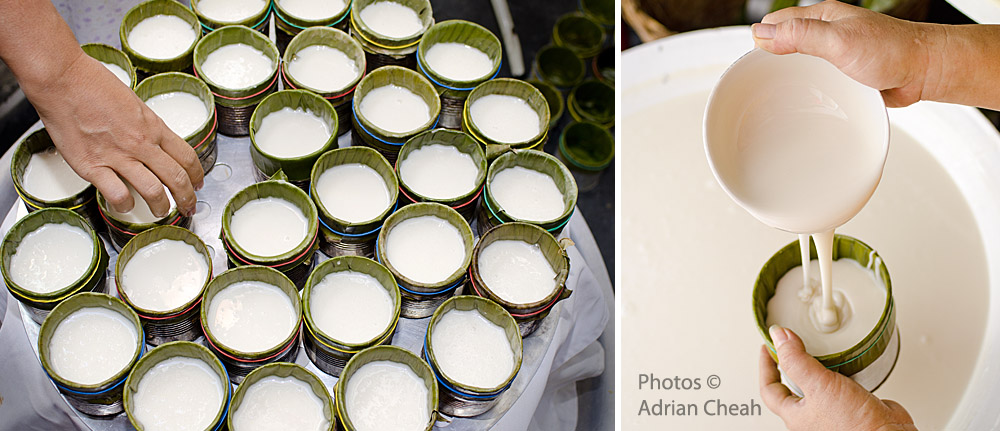
Making Ti Kuih is a labour of love. Though the recipe calls for only three simple ingredients – glutinous rice flour, sugar and water – it demands extraordinary patience, as the steaming process can take half a day or more. Modern adaptations may use brown sugar or caramelised sugar to shorten the cooking time, but traditionalists like Ms Tan Swee Gaik believe the long hours are essential to achieving the authentic caramelised flavour and smoky aroma.
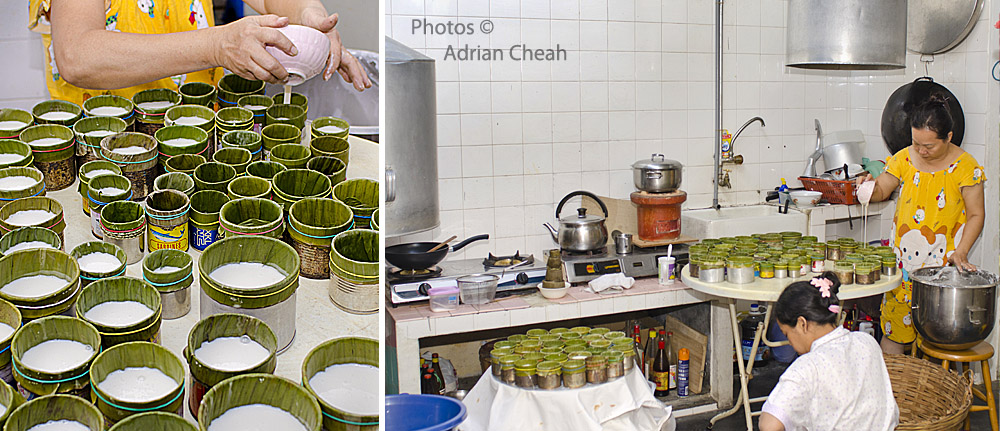
Ms Tan has been making Ti Kuih for many years, selling her goods at the Jelutong wet market. Her regular customers often book in advance, knowing that the quality of her Ti Kuih is assured. She uses a family recipe perfected over generations, with even the Ti Kuih tins handcrafted by her father.
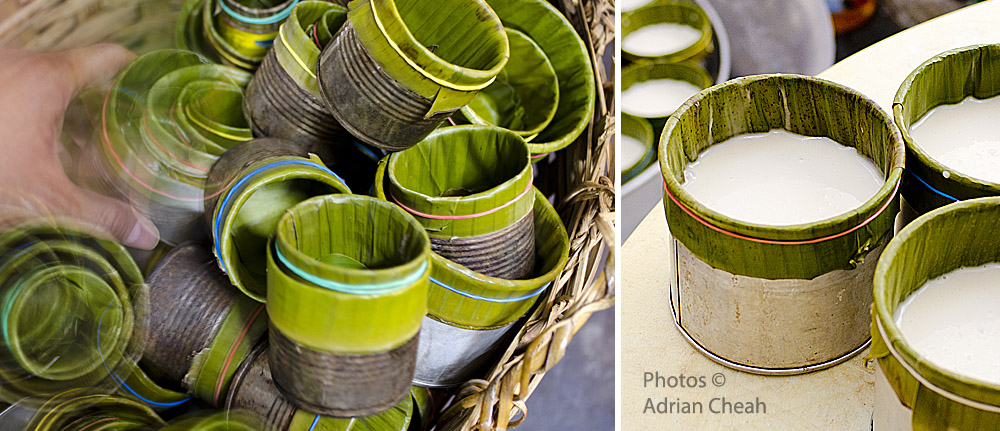
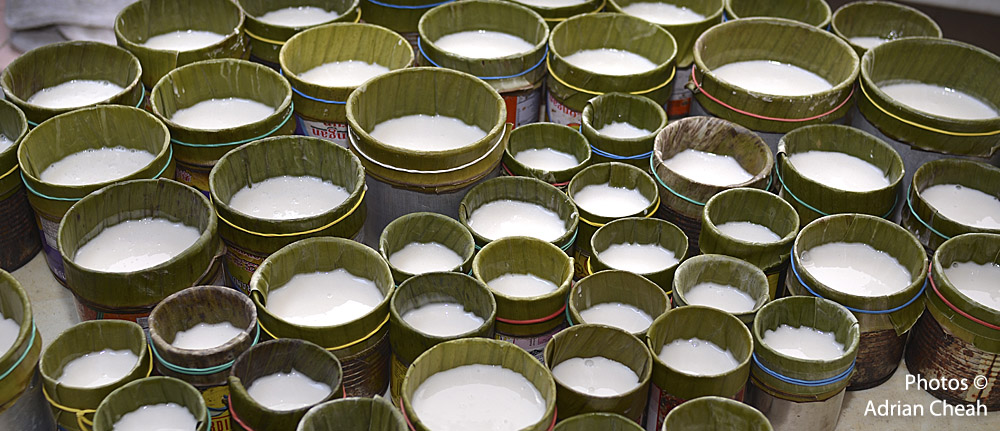
“Everything about making Ti Kuih is time-consuming", Ms Tan explains. “From lining the tins with banana leaves to monitoring the steamer for over 12 hours, it requires patience. The batter slowly transforms from pure white to light brown, then golden and finally a rich chestnut-toffee hue as the sugar caramelises.”

With the long hours of steaming, Ms Tan has developed a clever method for knowing when to top up the water in the steamer. She places a few coins in the large kuali used for steaming. As the water level drops, the coins will jingle, alerting her to add more water – all without needing to lift the lid.
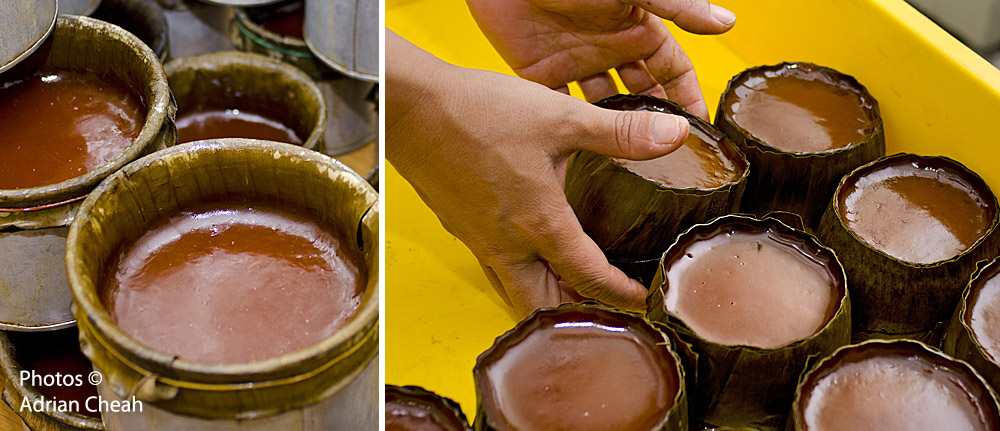
Once steamed, Ti Kuih must be left to set overnight to achieve the desired firmness before being carefully removed from the tins and trimmed for a neat finish. For the best results for cutting into slices, it should be left to harden slightly for at least a week; otherwise, it will remain too gooey and sticky to slice cleanly.

Fresh Ti Kuih is simply delicious paired with grated coconut, while hardened cakes can be steamed to restore their gooey softness. Another popular preparation involves slicing the Ti Kuih, sandwiching it between slices of yam and sweet potato, coating it in batter and deep-frying until golden.

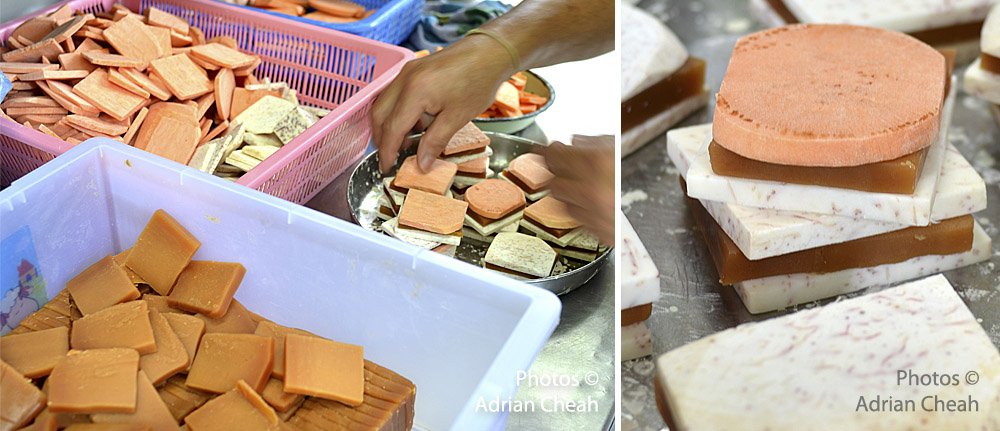
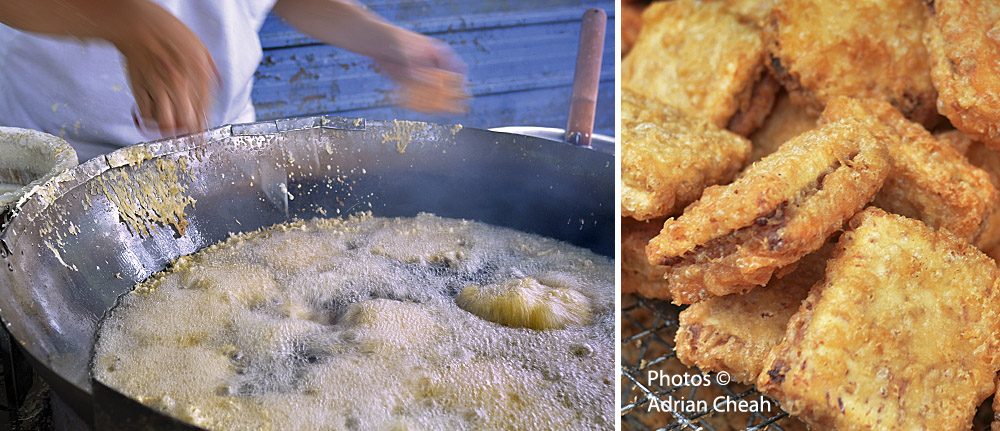
For those in Penang, goreng pisang vendors along Free School Road, Tan Jetty or Hin Pin in Tanjung Bungah serve this delectable snack. Encased in a crispy batter, the creamy yam and sweet potato pair well with the luscious Ti Kuih core, creating a scrumptious medley of textures and flavours. It is no surprise this heavenly treat is an offering to the Kitchen God – one bite and its divine appeal becomes clear.
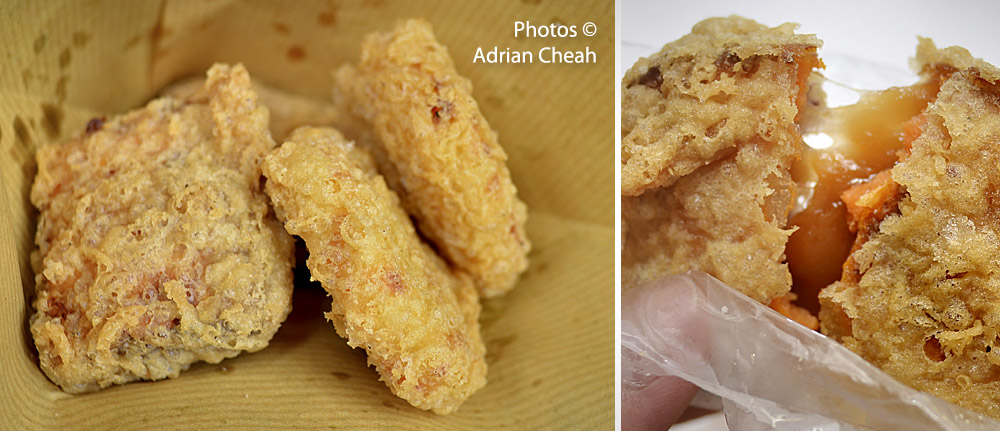
--------------------------------
Written and photographed by Adrian Cheah © All rights reserved
22 January 2014